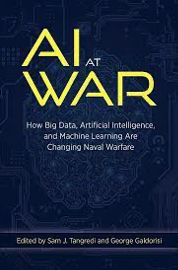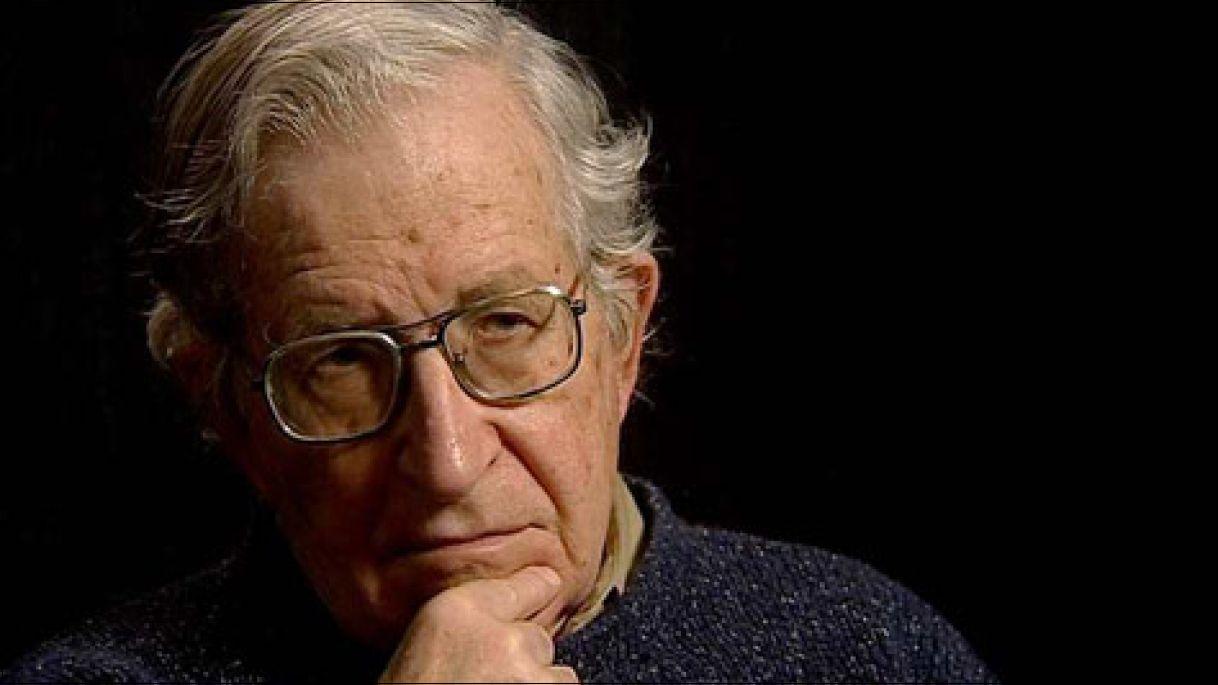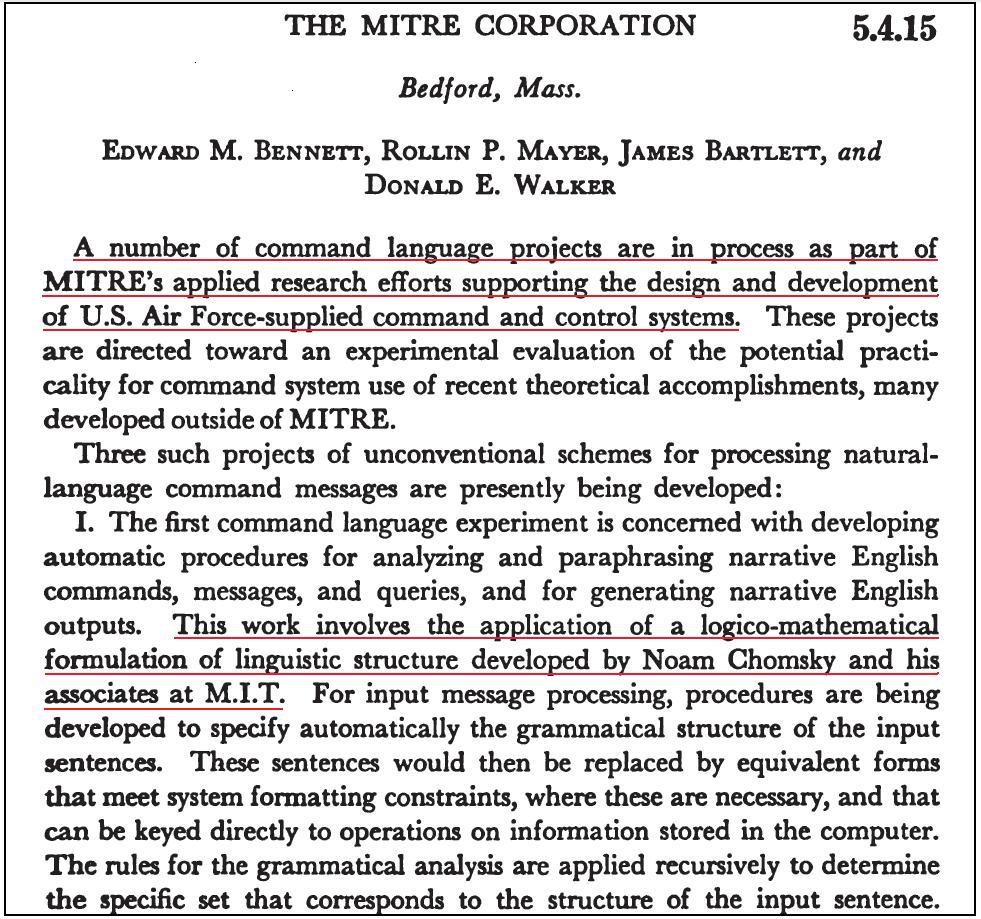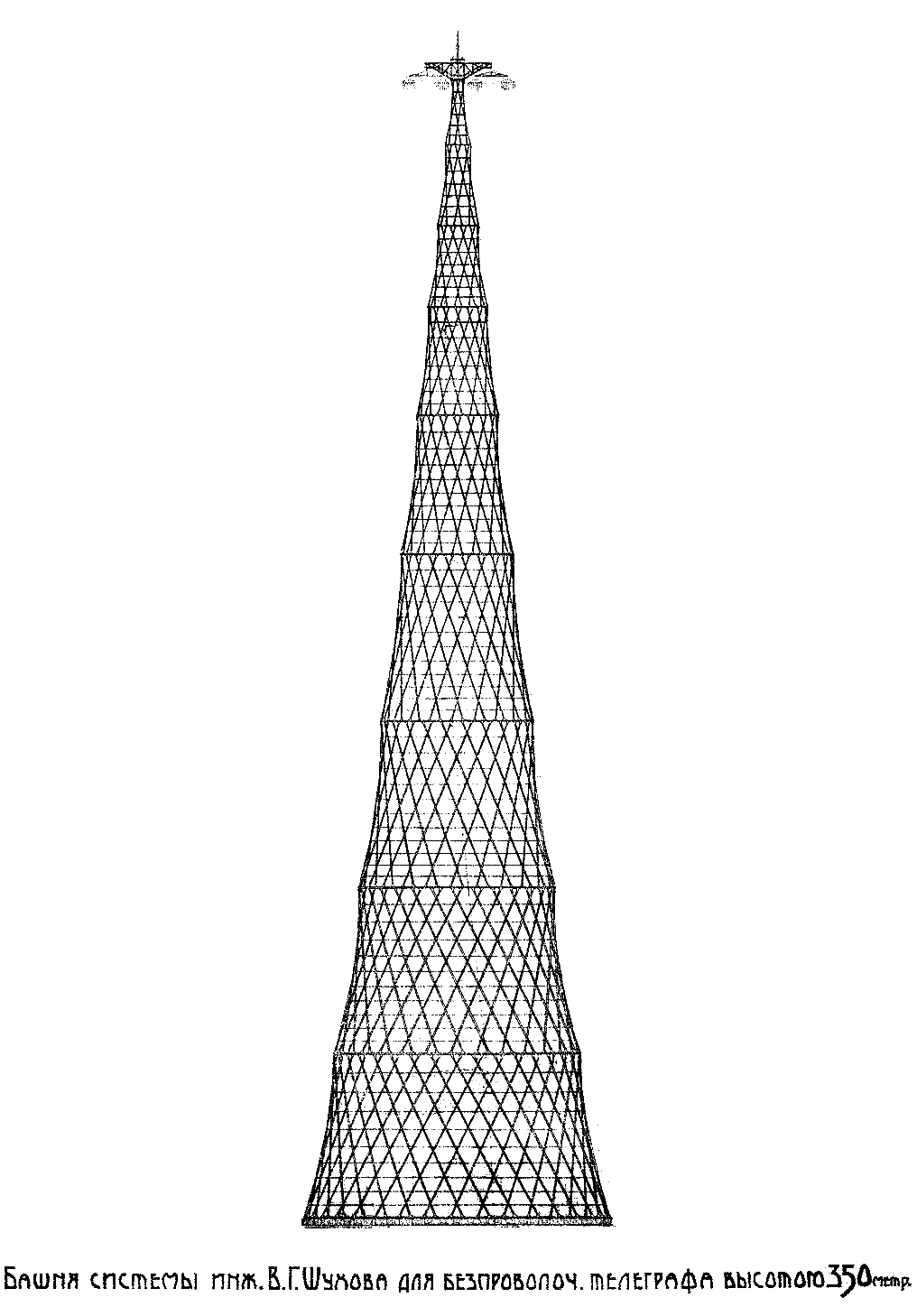1. Noam also downplayed MIT’s war research when asked by the New York Times to respond to my book (Sam Tanenhaus, ‘On Being Noam Chomsky’, New York Times, 31 October 2016). For Chomsky’s other responses to my book, see: Tom Bartlett, ‘The Chomsky Puzzle’, The Chronicle of Higher Education, 25 August 2016; Sam Fenn, ‘Chomsky's Carburetor’, Cited Podcast, no. 23, 2016 (http://citedpodcast.com/23-chomskys-carburetor/); Noam Chomsky, ‘Chomsky Says’ and ‘Chomsky has the Last Say’, London Review of Books, vol.39, no.12, 15 June 2017 and no.16, 17 August 2017. Also see note 20 on page 247 of the paperback edition of Decoding Chomsky (2018) for more examples of Noam understating MIT’s involvement in military research.
2. ‘Noam Chomsky and Michel Foucault. Human Nature: Justice versus Power’ in: Arnold Davidson, Foucault and his Interlocutors, 1997, p. 144.
3. Allott et al., The Responsibility of Intellectuals …, 2019, p. 98.
4. Louis Smullin, ‘Jerome Bert Wiesner, 1915-1994’, National Academy of Sciences Biographical Memoirs, vol.78, 2000, p. 9.
5. Daniel Lang, ‘Profiles, a Scientist’s Advice - 1’, New Yorker, 19 January 1963, pp. 40, 45-6.
6. Max Rosenberg, Plans and Policies for the Ballistic Missile Initial Operational Capability, 1960, pp. iii-iv, 6-7, 17, 22; David Snead, ‘Eisenhower and the Gaither Report: The Influence of a Committee of Experts on National Security Policy in the Late 1950s’, PhD thesis, University of Virginia, 1997, pp. 59-60, 79, 153, 196, 205. Wiesner’s New York Times obituary says that he ‘argued fervently for developing and manufacturing ballistic missiles.’ Eric Pace, ‘Jerome B. Wiesner, President of MIT, is Dead at 79’, New York Times, 23 October 1994.
7. Jerome Wiesner, ‘Prof. Wiesner Explains’, Chicago Tribune, 29 June 1969, p. 24.
8. Snead, ‘Eisenhower and the Gaither Report’, 1997, pp. 188-9.
9. Donald Brennan, ABM, Yes or No? 1969, p. 33. In 1958, Wiesner publicly promoted the concept of a ‘missile gap’ – if not the exact phrase – when he told a national television audience that the Soviets ‘are ahead of us in the missile field’. Snead, Eisenhower and the Gaither Report, 1997, p. 183.
10. Jerome Wiesner, Report to the President-Elect of the Ad Hoc Committee on Space, 10 January 1961 (https://www.hq.nasa.gov/office/pao/History/report61.html).
11. ‘Noam Chomsky interviewed by Jerry Brown’, SPIN Magazine, vol.9, no.5, August 1993.
12. Although Wiesner became quite outspoken about the dangers of new missile systems, he apparently felt no qualms about administering the technical research required for just such systems at MIT. When asked directly how he could do this, he left little room for doubt, explaining: ‘I don’t believe I should use my position in this institution to subvert a policy of the government, even if I disapprove’ (Victor McElheny, ‘For Jerome Wiesner the Past is Prologue’, Boston Globe, 7 March 1971, p. 103.)
Wiesner’s criticisms of US nuclear policy were hardly motivated by principled anti-militarism. Rather, he believed that an overemphasis on nuclear weapons distracted the US from building what he called the ‘truly effective conventional army’ required to ‘protect the oil fields’ of the Middle East (‘The Level of Might that’s Right: An interview with Jerome B. Wiesner’, Technology Review, vol.83, no.3, January 1981, pp. 59-62).
His concerns about nuclear proliferation were equally disingenuous. So, when, in the 1970s, the Shah of Iran wanted to develop nuclear weapons, Wiesner was happy to do a deal with him – a deal which Chomsky himself summed up as MIT ‘leasing’ the university’s ‘nuclear engineering department to the Shah’. Farah Stockman, ‘Iran’s Nuclear Vision Initially Glimpsed at Institute’, The Tech, vol.127, no.11, 13 March 2007; Abbas Milani, ‘The Shah’s Atomic Dreams’, Foreign Policy, 29 December 2010.
13. Gabriel Kolko, ‘The American Goals in Vietnam’ in: Noam Chomsky and Howard Zinn (eds), The Pentagon Papers, Critical Essays, Vol.5, 1972, p. 12. Volume 4 of the Pentagon Papers also mentions Wiesner’s involvement with the McNamara barrier and explains that its key requirements would include ‘20 million Gravel mines per month; possibly 25 million button bomblets per month; 10,000 SADEYE-BLU-26B clusters per month.’
A 1972 article in The Tech explains that, as MIT’s provost in the 1960s, Wiesner had been the chief officer responsible for military research and that, as its president, he now signed all its military contracts. The article then goes on to say that:
In each phase of the [Vietnam] war, MIT’s contributions have become progressively more important, until now MIT-based technology dominates the air war, and in some cases makes it possible. Failure to put a stop to MIT’s work in the past has made possible the air war and social redesigning (i.e. genocide) in Indochina today.
The Pentagon Papers, Gravel Edition, Vol.4, 1972, p. 122; Wells Eddleman, ‘Commentary: MIT may be Dangerous to the World’, The Tech, vol.92, no.21, 28 April 1972, p. 5.
14. Fredric Branfman, ‘Beyond the Pentagon Papers: The Pathology of Power’ in: Noam Chomsky and Howard Zinn (eds), The Pentagon Papers, Critical Essays, Vol.5, 1972, p. 303. See also: Ann Finkbeiner, The Jasons: The secret history of science’s post-war elite, 2007, pp. 65-66, 75-76; Sarah Bridger, Scientists at War: The Ethics of Cold War Weapons Research, 2015, ch.5.
15. In its section on the Vietnam War, MITRE’s official history states that, by 1967:
MITRE was devoting almost one-quarter of its total resources to the command, control, and communications systems necessary to the conduct of that conflict.
Robert Meisel and John Jacobs, MITRE: The First Twenty Years, A History of the MITRE Corporation (1958-1978), 1979, pp. 114-5.
16. Walter Munk, et al., ‘Gordon James Fraser Macdonald’, National Academy of Sciences Biographical Memoirs, vol.84, 2004, p. 242; Meisel and Jacobs, MITRE: The First Twenty Years, 1979, p. 266.
17. Allott et al., The Responsibility of Intellectuals …, 2019, p. 93; Nathaniel Rich, ‘Losing Earth: The Decade We Almost Stopped Climate Change’, New York Times, 1 August 2018.
18. Gordon MacDonald, ‘How to Wreck the Environment’ in: Nigel Calder (ed.), Unless Peace Comes; A scientific forecast of new weapons, 1968, p. 182, 191; Gordon Macdonald, Oral History Interview, no.3, American Institute of Physics, 21 March 1994. Macdonald not only investigated the use of ‘weather modification’ in Vietnam but also the use of chemical and nuclear weapons in that terrible conflict. Gregg Herken, Cardinal Choices; Presidential science advisers from the atomic bomb to SDI, 1992, pp. 158-9; Macdonald, Oral History Interview, no.3, 1994.
19. ‘Nomination of John M Deutch’, Hearings before the Select Committee on Intelligence of the US Senate, 1995, p. 110; Daniel Glenn, ‘MIT research heavily dependent on defense department funding: A Crack in the Dome’, The Tech, vol.109, no.7, 28 February 1989, p. 2.
20. Allott et al., The Responsibility of Intellectuals …, 2019, p. 97.
21. Thomas Huang, ‘Examining John Deutch’s Pentagon connections’ and ‘ABS, Chemistry Faculty did Bio-Warfare Research’, The Tech, vol.108, no.26, 27 May 1988, pp. 2, 11. In our Responsibility of Intellectuals book, Chomsky discusses the Clinton-era military doctrine that the US should portray itself as a country that ‘may become irrational and vindictive if its vital interests are attacked’. What Noam doesn’t mention, however, is that this doctrine was developed while his MIT colleague, John Deutch, was Deputy Defense Secretary and that it is likely that Deutch had significant input into the policy. Allott et al., The Responsibility of Intellectuals …, 2019, pp. 84-5.
22. David Dickson, ‘Chemical Warfare Protest Plans’, Nature, vol.295, 18 February 1982, p. 545.
23. Noam Chomsky, ‘Video interview for MIT 150 Infinite History Project’, 2009 (https://archive.org/details/NoamChomsky-InfiniteHistoryProject-2009/).
24. US House of Representatives, Research on Mechanical Translation, Report of the Committee on Science and Astronautics, 1960, pp. 6-7, 10-11.
25. US House of Representatives, Research on Mechanical Translation, Report of the Committee on Science and Astronautics, 1960, pp. 6-7, 10-11. By 1968, the US Air Force were mechanically translating around 100,000 words of Russian every day. Sergei Perschke, ‘Machine Translation – the second phase of development’, Endeavour, vol.27, 1968, p. 97-9. See also: Michael Gordin, ‘The Dostoevsky Machine in Georgetown: Scientific translation in the Cold War’, Annals of Science, vol.73, no.2, 2016, pp. 208-23, and Janet Nielsen, ‘Private Knowledge, Public Tensions: Theory commitment in postwar American linguistics’, PhD thesis, University of Toronto, 2010, pp. 39-42, 194, 338.
26. Allott et al., The Responsibility of Intellectuals …, 2019, pp. 97-9.
27. ‘Afterword, Business School: An Interview with Noam Chomsky’ in: Geoffry White and Flannery Hauck (eds), Campus Inc.: Corporate power in the ivory tower, 2000, p. 445. Funding for linguistics in this military lab was certainly generous. As Chomsky’s friend and colleague, Morris Halle, said:
There was always money available. It wasn’t a question of trying to find money, it was a question of thinking of ways of spending it. (Morris Halle, ‘50 Years of Linguistics at MIT, Lecture 10’, 2011, Youtube, 7 mins, 30 seconds.)
28. Allott et al., The Responsibility of Intellectuals …, 2019, p. 94. Life today is dominated by computers, the Internet and other by-products of post-war military research spending. It is therefore easy to be persuaded by Noam’s argument that this spending was primarily intended to develop ‘today’s high-tech economy’. But, of course, many other technologies – such as for example, low-pollution energy sources – were never fully developed although they could have made an equally important contribution to ‘today’s high-tech economy’. One obvious reason for this discrepancy is that low-pollution energy sources have no clear military use, whereas computers, the early Internet and – for a while – Chomsky’s linguistics were considered militarily useful.
29. Frederick Newmeyer, The Politics of Linguistics , 1986, pp. 85-6.
30. These Stanford academics mostly researched military funding that originated before the 1969 Mansfield Amendment which sought to restrict such funding to projects of direct military relevance. They were particularly critical of military-funded researchers who like to think that their research ‘is not dictated by any military problem’ and who thereby ‘ignore the fact that the [Pentagon] funds their research because it contributes explicitly to solving a military problem’. These academics also quoted a top US Air Force official who insisted that:
We don’t support broad research programs … which have little direct and apparent mission applicability to the Air Force.
Stanton Glantz and Norm Albers, ‘Department of Defense R&D in the University’, Science, vol.186, no.4165, 22 November 1974, pp. 706, 710-11; Stanton Glantz, et al., DOD Sponsored Research at Stanford: Its impact on the university, Vol. 1, ‘The Perceptions: The investigator’s and the sponsor’s’, 1971, SWOPSI, p. 7.
31. Glantz and Albers, ‘Department of Defense R&D in the University’, Science, 1974, p. 707.
32. ‘Chomsky’s Carburetor’, Cited Podcast, 2016.
33. Anthony Debons, ‘Command and Control: Technology and social impact’, Advances in Computers, vol.11, 1971, p. 354.
34. Claude Baum, The System Builders: The story of SDC, 1981, pp. 53-7, 71-7; Joel Isaac and Duncan Bell (eds), Uncertain Empire: American history and the idea of the Cold War, 2012, pp. 285-6.
35. C. Baum (ed.), ‘Natural-Language Processing’, Research Directorate Report, SDC, January 1964, pp. 7-8, 91.
36. Charles Bourne and Trudi Bellardo Hahn, A History of Online Information Systems, 1963-1976, 2003, pp. 17, 20, 43. See also: C. Baum, Research and Technology Division Report for 1966, SDC, January 1967, pp. 11-14 .
37. Arnold Zwicky, ‘Grammars of Number Theory: Some Examples’, Working Paper W-6671, MITRE Corporation, 1963, Foreword, last page; Arnold Zwicky and Stephen Isard, ‘Some Aspects of Tree Theory’, Working Paper W-6674, MITRE Corporation, 1963, Foreword, last page.
38. Allen Newell, ‘The Trip Towards Flexibility: An ongoing case of interaction between the behavioral and computer sciences’ in: George Bugliarello, Bioengineering: An engineering view, 1968, p. 271.
39. ‘Putting the World on a Blackboard’, Boston Globe, 2 June, 4 August, 25 August 1963, pp. A-9 to A-10; ‘Space Command and Control System’, New York Times, 4 August 1963, p. 117.
40. ‘How Much do you Know about MITRE?’, Technology Review, vol.64, no.4, February 1962, p. 36.
41. ‘Systems Men: Contact MITRE’, Boston Globe, 10, 17 and 31 March, 1963, pp. A-9 to A-12. See also: Meisel and Jacobs, MITRE: The First Twenty Years, 1979, especially pages: xiii, 18-9, 59, 65, 114-5.
42. Zwicky, ‘Grammars of Number Theory: Some Examples’, MITRE, 1963, Foreword, last page; Zwicky and Isard, ‘Some Aspects of Tree Theory’, MITRE, 1963, Foreword, last page.
43. Rebecca Slayton, Arguments that Count: Physics, Computing and Missile Defense, 1949-2012, 2013, pp. 47, 55-6, 156; Security Resources Panel, Deterrence and Survival in the Nuclear Age [Gaither Report], 1957, pp. v, 6-10, 27-30; Jerome Wiesner, Warning and Defense in the Missile Age, 1959 (https://nsarchive2.gwu.edu/NSAEBB/NSAEBB43/doc2.pdf); Howard Murphy, The Early History of the MITRE Corporation: Its background, inception, and first five years, Vol.1, 1972, pp. 180-1, 199, ch.7.
44. Kathyrn O’Neill, ‘Scientific Reunion Commemorates 50 years of Linguistics at MIT’, 2011 (https://shass.mit.edu/news/news-2011-scientific-reunion-commemorates-50-years-linguistics-mit); Antonio Zampolli, et al., Current Issues in Computational Linguistics: In Honor of Don Walker, 30 June 1994, pp. xxi-xxii.
45. Samuel Jay Keyser, ‘Linguistic Theory and System Design’ in: Information System Sciences, Joseph Spiegel and Donald Walker (eds), 1965, MITRE Corporation, pp. 495-505.
46. Another of Chomsky’s colleagues who worked for MITRE was G. Hubert Matthews. It is worth noting that, in his response to me, Chomsky is keen to mention Matthew’s work on Amerindian languages while omitting to mention his involvement with MITRE. It is also worth noting that Noam’s closest colleague at MIT, Morris Halle, ran an Air Force sponsored project to develop Chomsky’s theories or ‘computer control’ – a project with apparent connections to this MITRE work. Allott et al., The Responsibility of Intellectuals …, 2019, p. 95; Keyser, ‘The Case for Ordinary English’, System Engineering, 1963, pp. 20-1; Current Research and Development in Scientific Documentation, No. 14, 1966, pp. 111.
47. Samuel Jay Keyser, ‘The Case for Ordinary English’, System Engineering: an intensive course for engineers and scientists, 1963, pp. 5, 13, 19-21.
48. Samuel Jay Keyser, Mens et Mania: the MIT nobody knows, p.8.
49. ‘Chomsky’s students recall their time at the MITRE Corporation’, February 2018 (http://scienceandrevolution.org/blog/2018/2/17/chomskys-students-recall-their-time-at-the-mitre-corporation).
50. Current Research and Development in Scientific Documentation, No. 10, 1962, pp. 301-2.
51. The MITRE Corporation, Research and Experimentation, 1960-1964, January 1966, p. 90.
52. Current Research and Development in Scientific Documentation, No. 14, 1966, pp. 111-2.
53. ‘Chomsky’s students recall their time at the MITRE Corporation,’ 2018.
54. Barbara Partee, ‘Reflections of a Formal Semanticist as of February 2005’ (https://people.umass.edu/partee/docs/BHP_Essay_Feb05.pdf), p. 8n.
55. ‘Chomsky’s students recall their time at the MITRE Corporation,’ 2018.
56. ‘Chomsky’s students recall their time at the MITRE Corporation,’ 2018.
Professor Jonathan King revealed the level of self-delusion of many MIT researchers in the 1980s when he told an interviewer:
There were hundreds and hundreds of physics and engineering graduate students working on these weapons. … They’re working on [what was called] the hydrodynamics of an elongated object passing through a deloop fluid at high speed. ‘Well, Isn’t that a missile?’ – ‘No, I’m just working on the basic principle; nobody works on weapons.‘
Colm Renehan, ‘Peace Activism at the Massachusetts Institute of Technology from 1975 to 2001: A case study’, PhD thesis, Boston College, 2007, p. 247.
57. ‘Now at the MITRE Corporation’, Boston Globe, 4 November 1962, p. A-18. See also: Meisel and Jacobs, MITRE: The First Twenty Years, 1979, p. 101.
58. James Killian, Sputnik, Scientists, and Eisenhower: A memoir of the first special assistant to the President on science and technology, 1977, p. 59.
59. Daniel Kevles, The Physicists, 2013, p. 404; Jerome Wiesner, ‘Thinking Ahead with … Jerome Wiesner’, International Science and Technology, no.2, February 1962, pp. 28-33; Engineering in Biology and Medicine Training Committee, Status of Research in Biomedical Engineering, 1968, p. 69.
60. White and Hauck, ‘Afterword …’, Campus Inc.., 2000, pp. 445-6.
61. Allott et al., The Responsibility of Intellectuals …, 2019, p. 97.
62. MIT was always more interested in its researchers’ contributions to military science than in their political views. This was particularly evident during Senator McCarthy’s purges of the 1950s. A former MIT provost, Walter Rosenblith, recalls with some pride that when McCarthy’s envoys came to the ‘tower of war research’ that is MIT, the university’s president, James Killian, ‘showed them the door’. ‘Online Oral History Interview: Walter A. Rosenblith’, 19 July 2000, (https://libraries.mit.edu/_archives/oral-history-transcripts/rosenblith-pdf/rosenblith-session%202.pdf) pp. 20-2.
63. Allott et al., The Responsibility of Intellectuals …, 2019, p. 101, note 36.
64. Michael Feirtag, ‘Battering Ram III’, The Tech, vol.91, no.55, 14 December 1971, p. 8; Bruce Schwartz, ‘Kats, Bohmer, Mom Jailed’, The Tech, vol.90, no.28, 22 May 1970, p. 1.
65. Curtis Reeves, ‘19 Appeal Trespass Cases’, The Tech, vol.92, no.28, 4 August 1972, pp. 1, 13.
66. ‘A Faculty Petition in Support of the ROTC Occupation’, The Tech, vol.92, no.27, 19 May 1972, p. 3.
67. Noam Chomsky, ‘Video interview for MIT 150 Infinite History Project’, 2009 (https://archive.org/details/NoamChomsky-InfiniteHistoryProject-2009/).
68. Joel Segel, Recountings: Conversations with MIT mathematicians, 2009, pp. 206-7.
69. Allott et al., The Responsibility of Intellectuals …, 2019, pp. 96, 115-6; Robert Barsky, Noam Chomsky, a life of dissent, 1997, p. 140.
70. Dorothy Nelkin, The University and Military Research, 1972, pp. 81-2; Eugene Skolnikoff, ‘Video Interview for MIT 150 Infinite History Project’, 2011 (https://infinitehistory.mit.edu/video/eugene-b-skolnikoff-’50-sm-’50-phd-’65).
See also: Noam Chomsky, MIT Review Panel on Special Laboratories, Final Report, October 1969, pp. 17, 31.
71. MIT Review Panel on Special Laboratories, Final Report, October 1969, pp. 37-8.
72. Stephen Shalom, ‘A Flawed Political Biography’, New Politics, vol.6(3), no.23, summer 1997. Michael Albert, has since described Noam’s position as, in effect, ‘preserving war research with modest amendments.’ Michael Albert, Remembering Tomorrow: From the politics of opposition to what we are for, 2006, p. 98.
73. Allott et al., The Responsibility of Intellectuals …, 2019, p. 115.
74. Allott et al., The Responsibility of Intellectuals …, 2019, p. 116.
75. In the 1980s, MIT justified its continuing research on nuclear and other weapons on the grounds that such research was acceptable because it wasn’t ‘operational weapons work’. As one anti-militarist campaigner said at the time:
MIT is so deeply involved in work relating to weapons systems that they have to resort to some sort of sophistry to justify it.
The same article that reported this, also reported Wiesner saying:
If you’re going to do defense research, you should do it as well as you can. At MIT we can do it very, very well.
Robert Levey, ‘MIT Role in Research and Military Questioned: Classified Work is Done at Off-Campus Labs’, Boston Globe, 7 August 1983, pp. 1, 16.
76. James Hand (ed.), MIT’s Role in Project Apollo, vol.1, October 1971, p. 5. MIT’s president in the 1980s, Paul Gray, has clearly stated that, during the 1960s, the university’s military labs were ‘an integral part of MIT’. Jerome Wiesner, Jerry Wiesner: Scientist, statesman, humanist: memories and memoirs, 2003, p. 109.
77. MIT Review Panel on Special Laboratories, 1969, pp. 59-69.
78. Chomsky, ‘Video Interview for MIT 150 Infinite History Project’, 2009; Noam Chomsky, ‘Interview with Noam Chomsky’, Works and Days, vol.26-7, 2008-9, pp. 530-34. Chomsky has continued to contradict himself on the issue of whether MIT’s military labs were integrated with the university’s academic activities. For example, in his 2019 response to me, Chomsky clearly stated that MIT’s military labs were ‘entirely separate from the academic program’. Yet in an earlier response, in 2017, he stated that there would have been no point in separating MIT’s military labs from the university because they ‘would continue their work as before, also effectively maintaining relations with academic programmes.’ Allott et al., The Responsibility of Intellectuals …, 2019, p. 96; Noam Chomsky, ‘Chomsky Says’, London Review of Books, vol.39, no.12, 15 June 2017.
79. Milan Rai, Chomsky’s Politics, 1995, p. 130.
80. Allott et al., The Responsibility of Intellectuals …, 2019, p. 93.
81. Noam Chomsky, ‘Chomsky Says’ and ‘Chomsky has the Last Say’, London Review of Books, vol.39, no.12, 15 June 2017 and no.16, 17 August 2017; Allott et al., The Responsibility of Intellectuals …, 2019, p. 91-2.
82. Allott et al., The Responsibility of Intellectuals …, 2019, p. 101, 96-9 .
83. Mark Liberman, ‘Morris Halle: an appreciation’, Annual Review of Linguistics, vol.2 no.1, January 2016, p. 8.
84. Barsky, 1997, p. 54, 81; Chris Knight, Decoding Chomsky: Science and revolutionary and politics, p. 60.
85. Chris Knight, Decoding Chomsky: Science and revolutionary and politics, p. 56.
86. Noam Chomsky, Morphophonemics of Modern Hebrew (Reprint of PhD thesis, 1951), 1979; Noam Chomsky and Morris Halle, The Sound Pattern of English, 1968.
87. Noam Chomsky, ‘Language and Mind: Current Thoughts on Ancient Problems’ in Lyle Jenkins (ed.), Variation and Universals in Biolinguistics, 2004, p. 405.
88. Noam Chomsky, Language and Problems of Knowledge: The Managua Lectures, 1988, p. 2; Denis Staunton, ‘Iconoclast and radical who takes a long view‘, Irish Times, 21 January 2006.
89. For more on my approach to Chomsky’s linguistics, see the Open Democracy debate involving myself, Fritz Newmeyer, Randy Allen Harris, Wolfgang Sperlich and others HERE.
90. ‘Actually you can use language even if you are the only person in the universe with language, and in fact it would even have adaptive advantage. If one person suddenly got the language faculty, that person would have great advantages; the person could think, could articulate to itself its thoughts, could plan, could sharpen, and develop thinking as we do in inner speech, which has a big effect on our lives. Inner speech is most of speech. Almost all the use of language is to oneself. Noam Chomsky, On Nature and Language, 2000, p. 148.
91. Adele Goldberg, Explain Me This. Creativity, competition, and the partial productivity of constructions, 2019, p. 145.
92. Chomsky, ‘Three factors in language design’, Linguistic Inquiry, vol.36, no.1, 2005, pp. 11-12.
93. In 2000, Chomsky said ‘there is overwhelming reason to believe that concepts like, say, climb, chase, run, tree and book and so on are fundamentally fixed.’ In 2010, when again discussing the innate nature of such concepts, he wrote:
Furthermore, there is good reason to suppose that the argument is at least in substantial measure correct even for such words as carburetor and bureaucrat. … However surprising the conclusion may be that nature has provided us with an innate stock of concepts, and that the child’s task is to discover their labels, the empirical facts appear to leave open few other possibilities.
Noam Chomsky, New Horizons in the Study of Language and Mind, 2010, pp. 64-6; Noam Chomsky, The Architecture of Language, 2000, p. 75.
94. This point has been conceded by Chomsky himself, but if readers require further evidence, they can turn to the work of Christina Behme, Margaret Boden, Cedric Boeckx, Rudolf Botha, Daniel Everett, Vyvyan Evans or Michael Tomasello. These days, the theoretical approach developed by Adele Goldberg and her colleagues – known as ‘construction grammar’ – is considerably more influential and widely admired within the discipline of linguistics than Chomsky’s so-called ‘generative’ approach. Noam Chomsky, On Nature and Language, 2002, p. 151; Christina Behme, ‘A “Galilean” science of language’, Journal of Linguistics, vol.50, no.3, November 2014; Margaret Boden, Mind as Machine: A history of cognitive science, 2006; Cedric Boeckx, 2017, ‘Not only us’, Inference, vol.3, no.1; Rudolph Botha, Challenging Chomsky: The generative garden game, 1989; Daniel Everett, Language, the Cultural Tool, 2012; Vyvyan Evans, The Language Myth: Why language is not an instinct, 2014; Michael Tomasello and Paul Ibbotson, ‘Evidence Rebuts Chomsky’s Theory of Language Learning’, Scientific American, November 2016; Adele Goldberg, Constructions at Work: The Nature of Generalization in Language, 2006. See also: Chris Knight, Decoding Chomsky: Science and revolutionary and politics, 2016, pp. 150-6, 162-8.
95. Kenneth Hale, 'On the position of Warlpiri in a typology of the base', Indiana University Linguistics Club, 1981. See also: Kenneth Hale, 'Warlpiri and the grammar of non-configurational languages', Natural Language and Linguistic Theory, Vol.1, 1983, pp. 5-47; Kenneth Hale, 'On Nonconfigurational Structures' in: Laszlo Maracz and Pieter Muysken, Configurationality: The typology of asymmetries, 1989.
96. Hale, 'Warlpiri and the grammar...', 1986; Hale, 'On Nonconfigurational Structures...', 1986, p. 352.
97. Noam Chomsky, Lectures on Government and Binding, 1981.
98. Kenneth Hale, 'Warlpiri and the grammar of non-configurational languages', Natural Language and Linguistic Theory, vol.1, 1983, pp. 5-47. See also Kenneth Hale, 'On nonconfigurational structures', 1989.
99. David Golumbia, 'The interpretation of nonconfigurationality', Language and Communication, vol.24, 1-22.
100. Noam Chomsky, The Minimalist Program Cambridge, 1995.
101. Robert Berwick and Noam Chomsky, 'The biolinguistics programme: the current state of its development', in: Anna Maria Di Sculio and Cedric Boeckx, The Biolinguistic Enterprise: New Perspectives on the Evolution and Nature of the Human Language Faculty; Noam Chomsky, 'Of minds and language', Biolinguistics, vol.1, 2007, pp. 9-27.
102. Noam Chomsky, The Science of Language: Interviews with James McGilvray, p. 41.
103. Tomasello and Ibbotson, 'Evidence Rebuts Chomsky's Theory of Language Learning', Scientific American, 2016.
104. Richard Lee (ed.), The Cambridge Encyclopaedia of Hunters and Gatherers, 1999.
105. Chris Knight, 'Language and revolutionary consciousness' in: Alison Wray, The Transition to Language, pp. 138-60; Chris Knight and Jerome Lewis, 'Vocal deception, laughter, and the linguistic significance of reverse dominance' in: Dan Dor, Chris Knight and Jerome Lewis, The Social Origins of Language, 2014, pp. 297-314.
106. Dor, Knight and Lewis, The Social Origins of Language, 2014, pp. 228-46; Chris Knight and Jerome Lewis, 'Wild voices: Mimicry, Reversal, Metaphor and the Emergence of Language', Current Anthropology, 2017, vol.58, no.4, pp. 435-53.
107. Adam Jones, 'The Radical Vocation: An Interview with Noam Chomsky', 1990.
108. Margaret Boden writes: ‘A remarkable case of unrestrained abuse on Chomsky’s part was noted by William Bright, an expert on indigenous American languages and the key founder of sociolinguistics. As editor of Language for the previous twenty years, Bright had written to Chomsky in 1984 urging him to submit a paper. It was a pity, he felt, that the discipline’s leading journal hadn’t published anything by its leading theorist for many years… Chomsky’s reply was not your usual polite brush-off: Sorry: too busy, too many deadlines . . . . To Bright’s amazement, Chomsky wrote (alongside other abuse) that he would never consider publishing in a journal that had published “flat lies . . . couched in a rhetoric of a sort that might be appropriate to some criminal, but that one is surprised to find in a scholarly journal.”’ [Margaret A. Boden, 2008. Odd man out: Reply to reviewers. Artificial Intelligence, 172: 1944-1964, p. 1961; ref.: J. Hill, obituary of William Oliver Bright, Language 83 (3) (2007) 628–641. Quote is on page 636].
Chomsky does not quite call me a criminal, but comes near.





































































